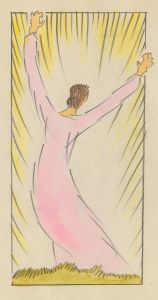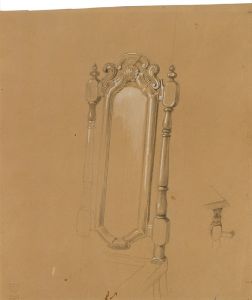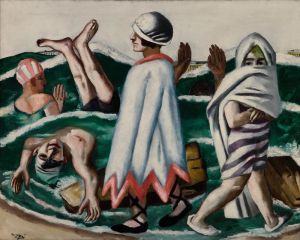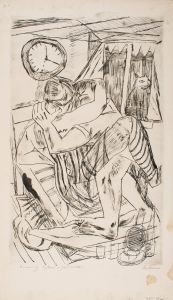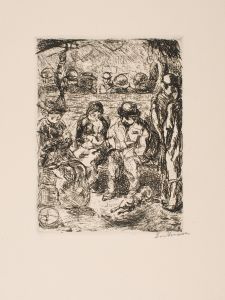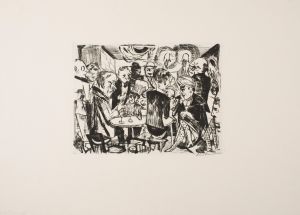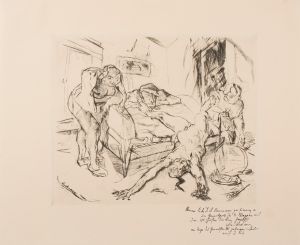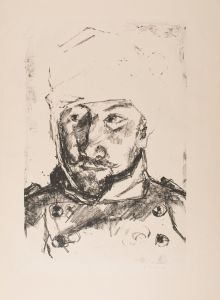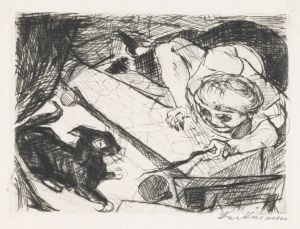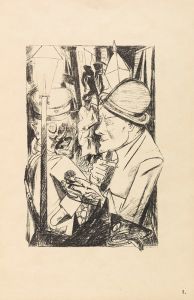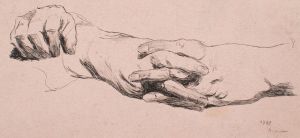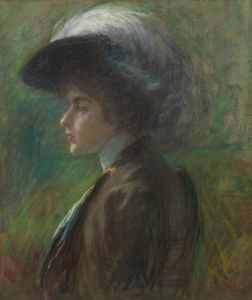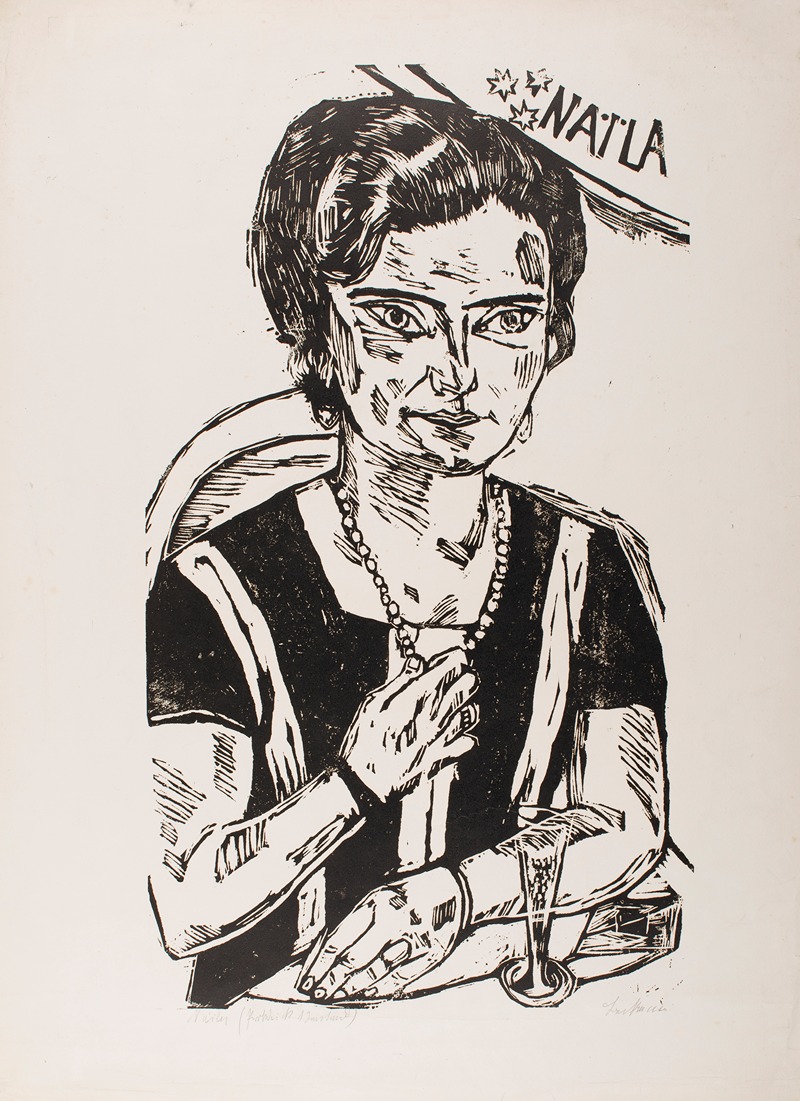
Portrait of ‘Frau H. M.’
A hand-painted replica of Max Beckmann’s masterpiece Portrait of ‘Frau H. M.’, meticulously crafted by professional artists to capture the true essence of the original. Each piece is created with museum-quality canvas and rare mineral pigments, carefully painted by experienced artists with delicate brushstrokes and rich, layered colors to perfectly recreate the texture of the original artwork. Unlike machine-printed reproductions, this hand-painted version brings the painting to life, infused with the artist’s emotions and skill in every stroke. Whether for personal collection or home decoration, it instantly elevates the artistic atmosphere of any space.
Max Beckmann's "Portrait of ‘Frau H. M.’" is a significant work within the oeuvre of the German painter, known for his distinctive style that bridges the gap between Expressionism and New Objectivity. Beckmann, born in 1884 in Leipzig, Germany, was a prominent figure in 20th-century art, whose works often reflect the tumultuous socio-political landscape of his time.
The painting "Portrait of ‘Frau H. M.’" was completed in 1923, a period when Beckmann was deeply engaged with portraiture. This era in his career was marked by a focus on the human condition, often exploring themes of identity and the psychological depth of his subjects. Beckmann's portraits are renowned for their intensity and the way they capture the essence of the sitter, often revealing more than just their physical appearance.
"Portrait of ‘Frau H. M.’" exemplifies Beckmann's mature style, characterized by bold lines, a rich palette, and a keen attention to detail. The composition of the painting is typical of Beckmann's work, where the subject is often placed against a stark background, emphasizing their presence and individuality. The use of color and form in this portrait reflects Beckmann's ability to convey emotion and character, making the viewer feel an intimate connection with the subject.
The identity of ‘Frau H. M.’ remains somewhat enigmatic, as Beckmann often painted individuals from his social circle, including friends, family, and acquaintances. This anonymity adds a layer of intrigue to the painting, inviting viewers to ponder the relationship between the artist and the sitter. Beckmann's portraits are not just representations of individuals but are also reflections of the broader human experience, capturing the complexities and nuances of life in the Weimar Republic.
During the early 1920s, Germany was undergoing significant changes, both politically and culturally. The Weimar Republic was a time of great artistic experimentation and freedom, but also of economic hardship and political instability. Beckmann's work from this period often reflects these tensions, and his portraits can be seen as a commentary on the society in which he lived.
Beckmann's technique in "Portrait of ‘Frau H. M.’" showcases his mastery of form and his ability to imbue his subjects with a sense of dignity and presence. His use of strong outlines and a limited color palette creates a sense of immediacy and focus, drawing the viewer's attention to the subject's expression and posture. This approach is typical of Beckmann's work, where the interplay of light and shadow adds depth and dimension to the composition.
Max Beckmann's contribution to modern art is significant, and his portraits remain highly regarded for their psychological depth and artistic innovation. "Portrait of ‘Frau H. M.’" is a testament to his skill as a portraitist and his ability to capture the essence of his time. The painting not only serves as a representation of an individual but also as a window into the cultural and historical context of early 20th-century Germany.
In summary, "Portrait of ‘Frau H. M.’" is a compelling example of Max Beckmann's work, reflecting his unique style and the broader themes of identity and society that permeate his art. Through this painting, Beckmann offers a glimpse into the complexities of human nature and the world in which he lived, making it a valuable piece of art history.






